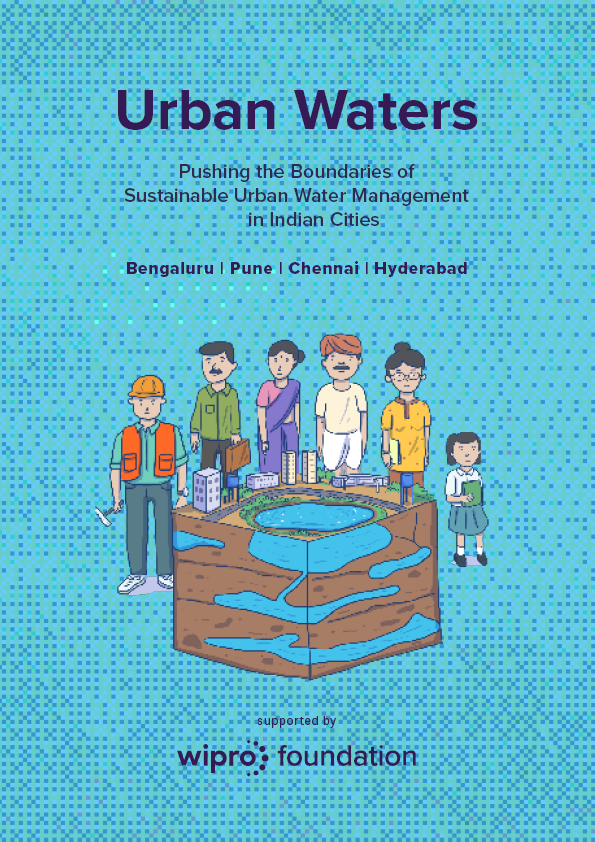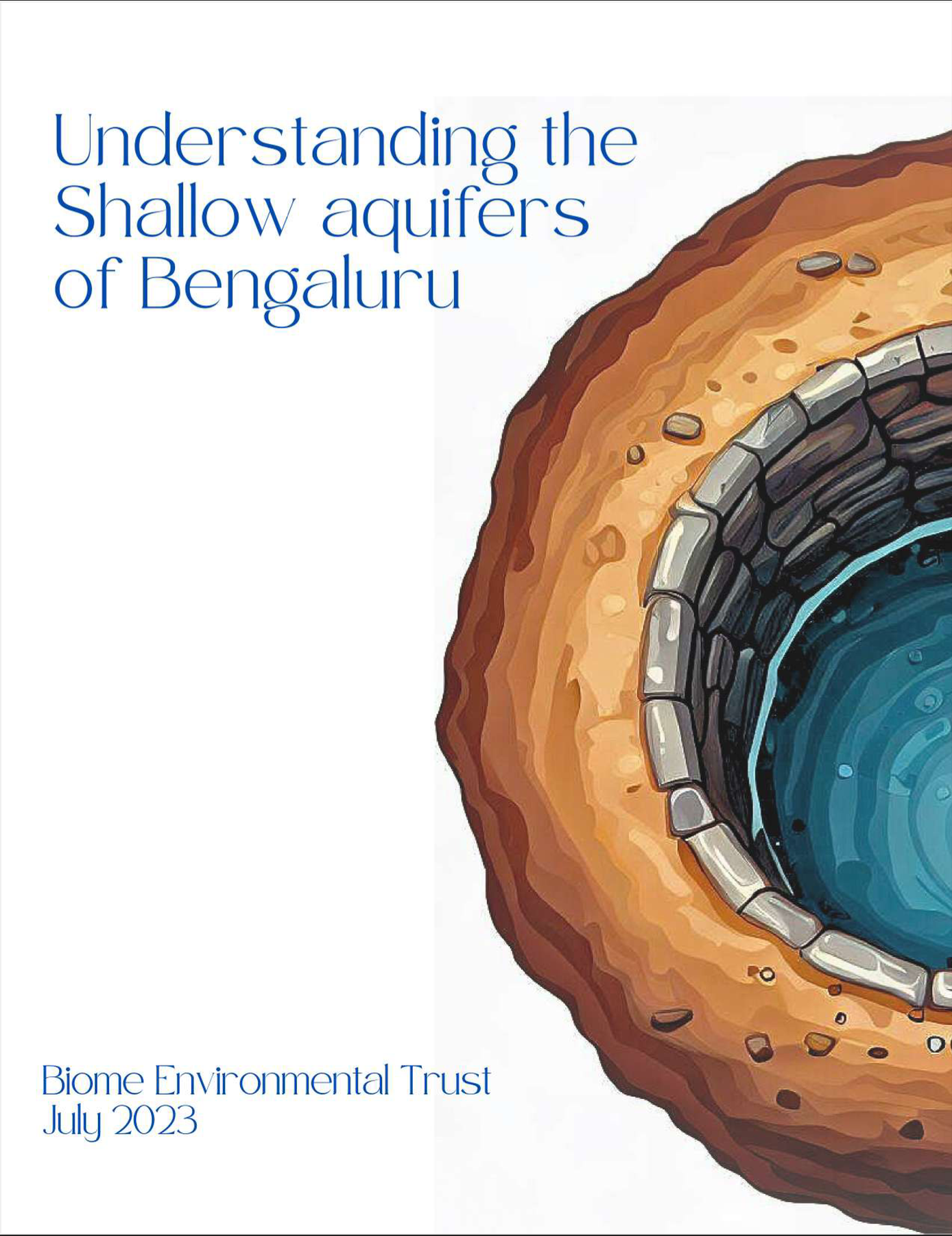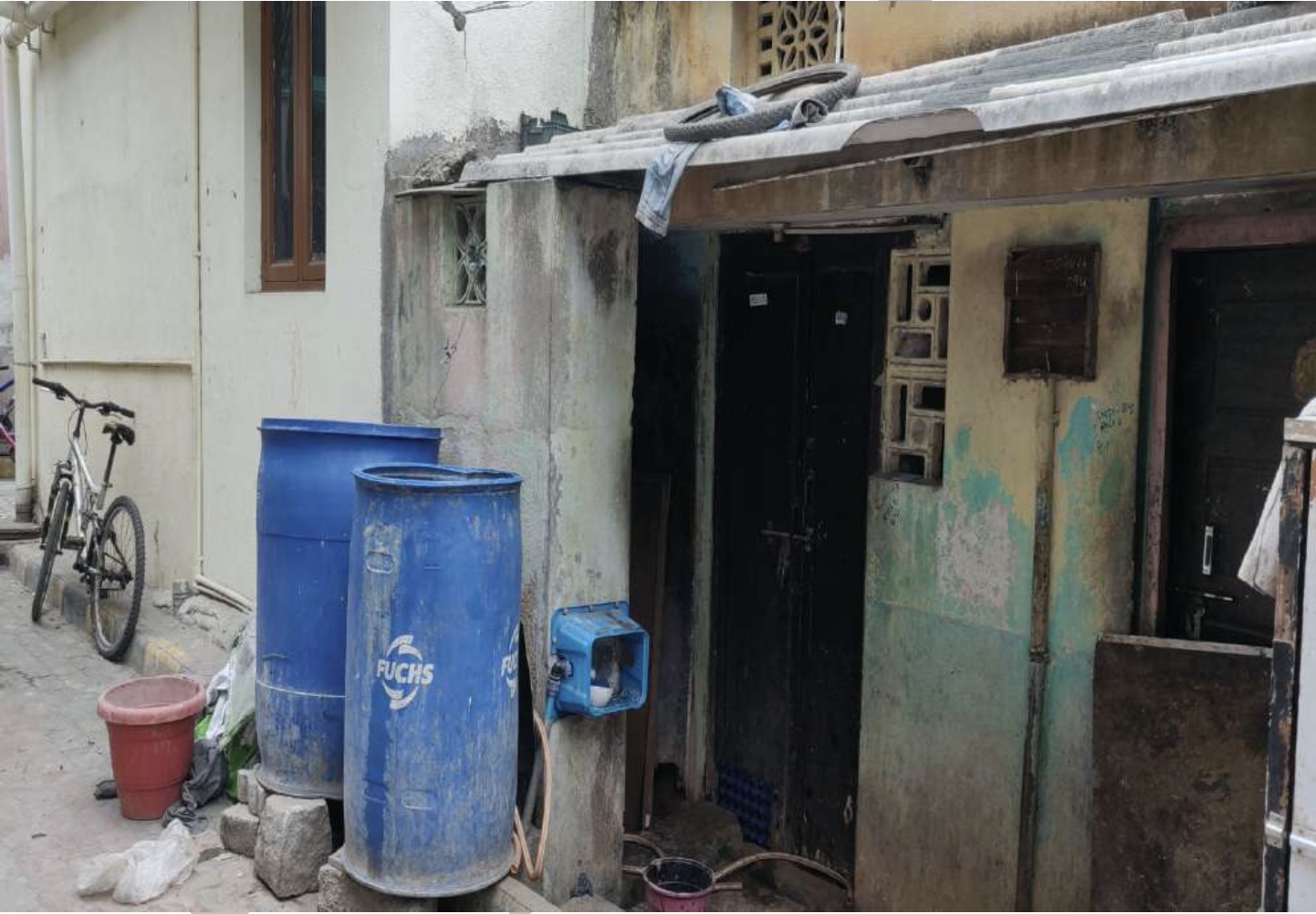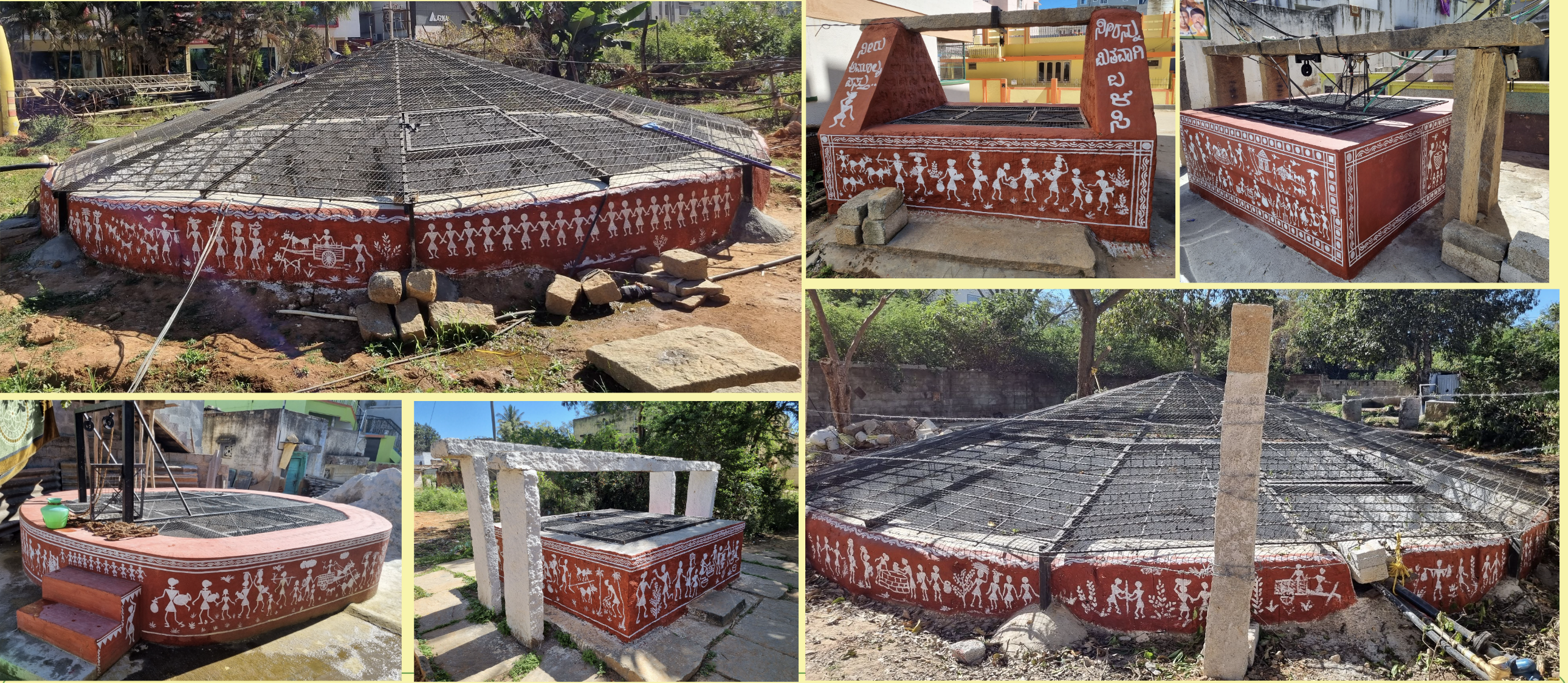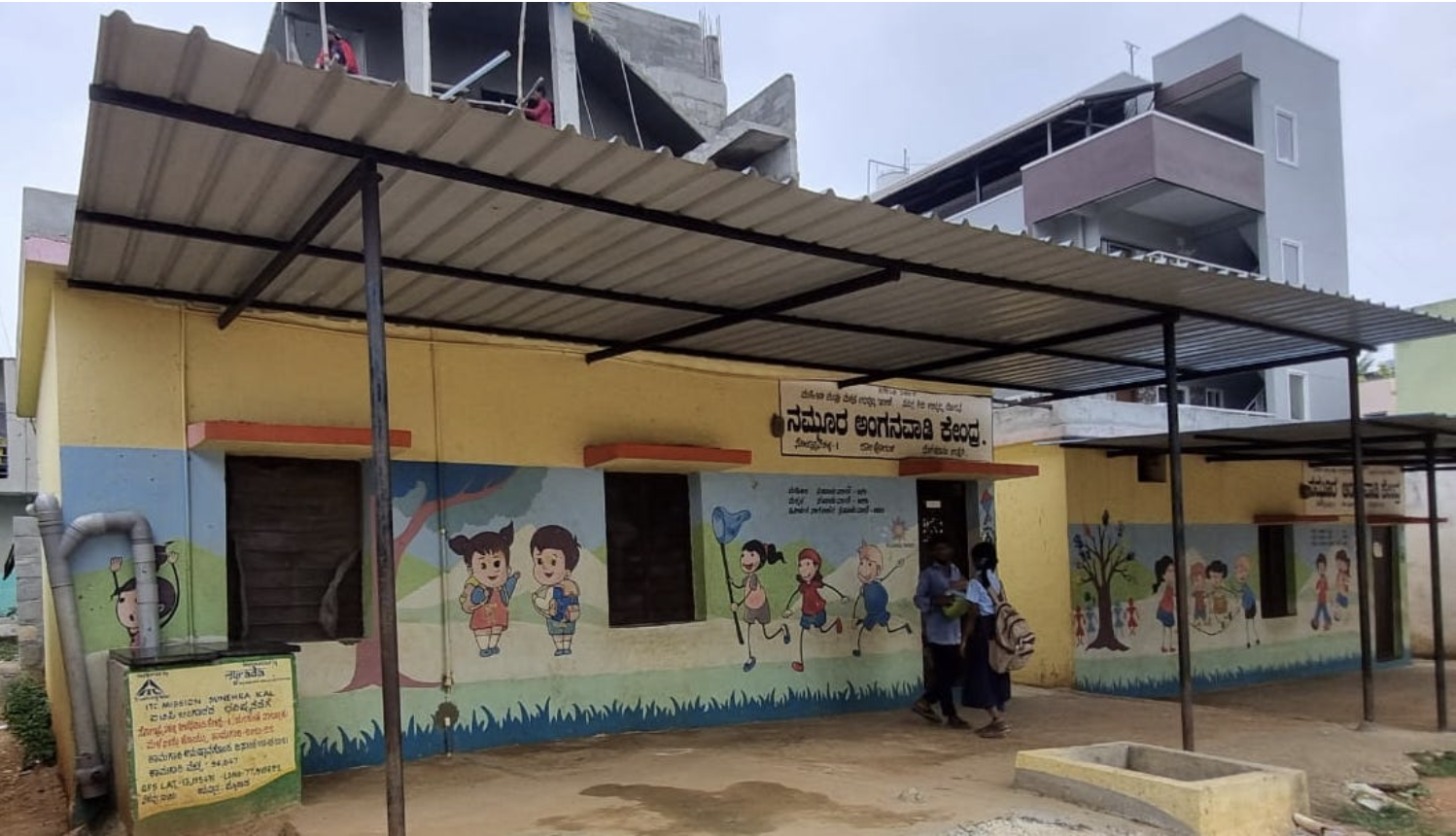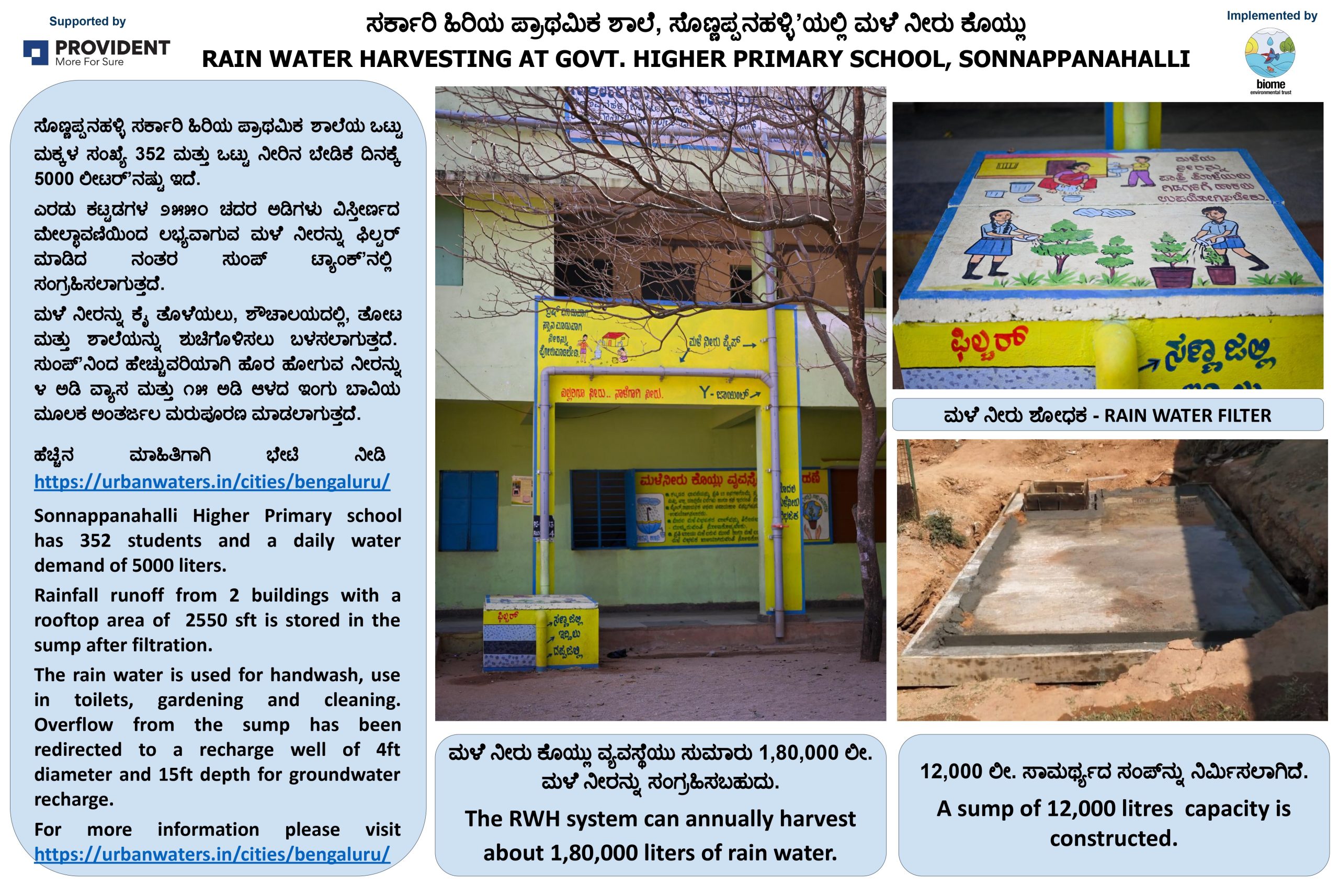An open well beside a lake provides water to a school
Kaikondrahalli in southeast Bengaluru is a parched area. BWSSB does not supply water here, and borewells around 1000 feet deep are common. But there is a major water source here – Kaikondarahalli lake. Near the lake are big apartment communities as well as individual houses and marketplaces. Right next to the lake is Renuka School, an aided Kannada medium school were around 300 children study.
The lake, which was in poor condition until a few years back, was rejuvenated by the persistent efforts of a small group of residents nearby. The residents’ group officially maintains the lake now. Lake rejuvenation has benefited Renuka School, which never had its own water source.
Until 2013, the school management used to buy 1000 litres of tanker water every week. But then the management tried something new – they dug an open well in the compound. The 14-feet deep open well now provides 1000 litres of water per day. The well fills up because of water percolating from the lake, and the school does not buy tanker water anymore.
The well is pumped twice a day; about 500 litres get pumped at a time, says Nagesh M K, crop teacher at the school and in-charge of maintaining the well. “The well becomes empty after each pumping, and fills up within the next 2-3 hours,” he says. Well water is used in the school’s wash area, toilets, and also for gardening. The wash area is a small building for children to wash their hands as well as midday meal plates; water is pumped up to a barrel on top of the building. “Labourers working around the lake also use the wash area at times. Water demand increased as the number of students increased in the last few years,” says Nagesh.
Water is also pumped to three barrels inside the school, for use in toilets. For gardening, a hose pipe is connected directly to the well. The school garden is watered daily during summers, and twice a week otherwise. Students also water a small portion of the lake’s garden, which they nurture themselves as part of co-curricular activities.
With its open well, the school is in fact following an age-old practice. Traditionally, in Bengaluru, water was drawn from wells around lakes, rather than directly from lakes. The quality of well water would be better since soil between the well and lake naturally filters out impurities in the percolating water. Nagesh says water level in the school well depends on the lake. “There is always water when the lake is full, but water level reduces during summer,” he says. In an area where people spend lakhs of rupees on borewells, Renuka High school leads the way with a cheap, sustainable and nature-friendly model.
| Daily usage | 1000 litres |
| Description of implementation | Well was lined using concrete rings, and covered with a concrete slab. When pumped, well water goes into a 500 litre barrel placed on top of the handwash area, and into three 250-litre barrels inside the school building for use in toilets. A hosepipe connected to the well is used for gardening. |
| Contact | water@biome-solutions.com |


